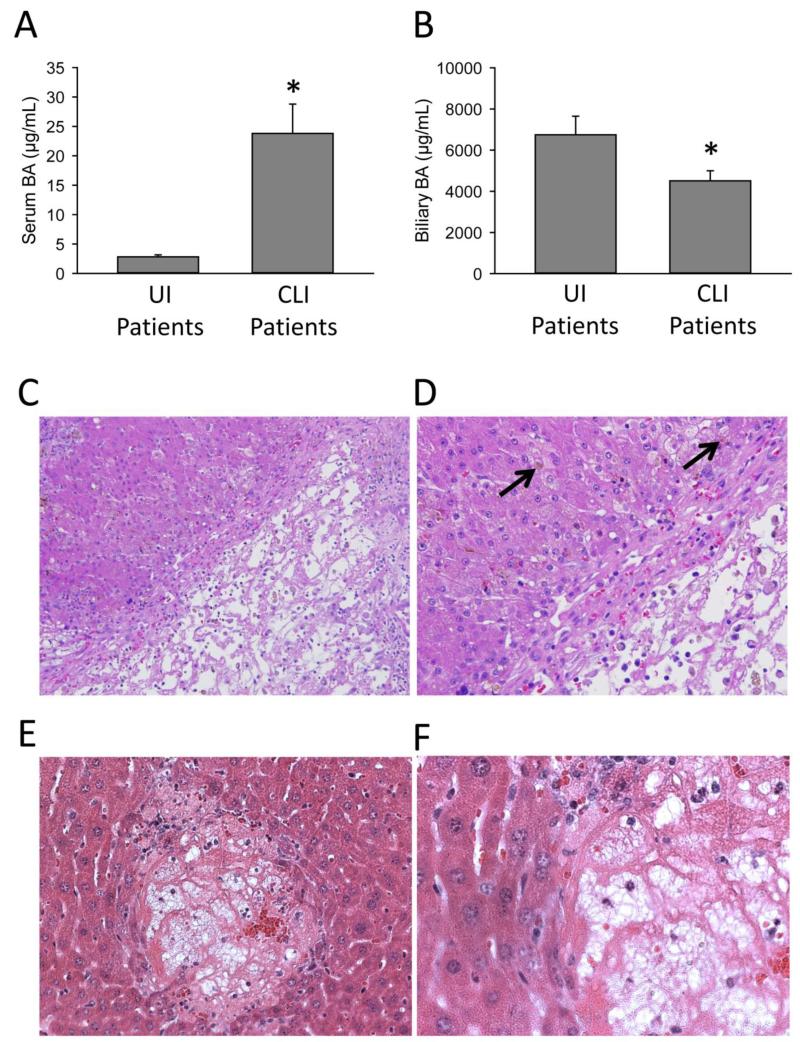Figure 1.
Infarction of the biliary tracts mediates the initial injury in cholestatic human patients. Serum (A) and bile (B) samples obtained from patients thought to have biliary obstruction during routine ERCP. Total and individual bile acid levels were measured in these samples via UPLC/MS. Patient data are presented in Table 1. H&E staining was performed in liver sections from human patients with confirmed extrahepatic cholestasis (C,D) and mice 72 h after bile duct ligation (E,F). Frank necrosis is seen in the image (C) in an area of biliary infarction. Bile (marked by black arrow) leaks into adjacent hepatic parenchyma (D). Bile infarcts in mice subjected to 72 h bile duct ligation show similar histological features (E,F).

